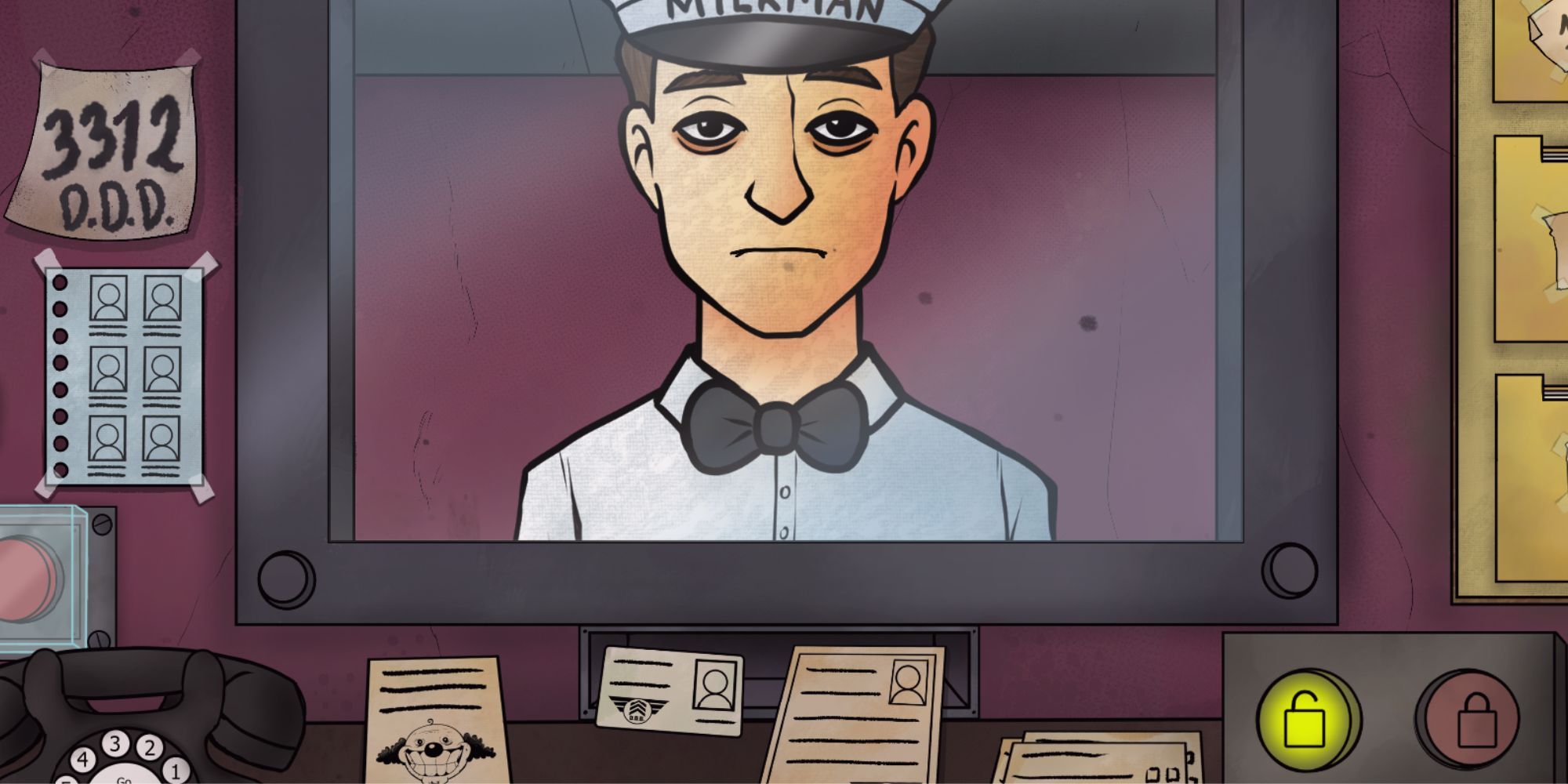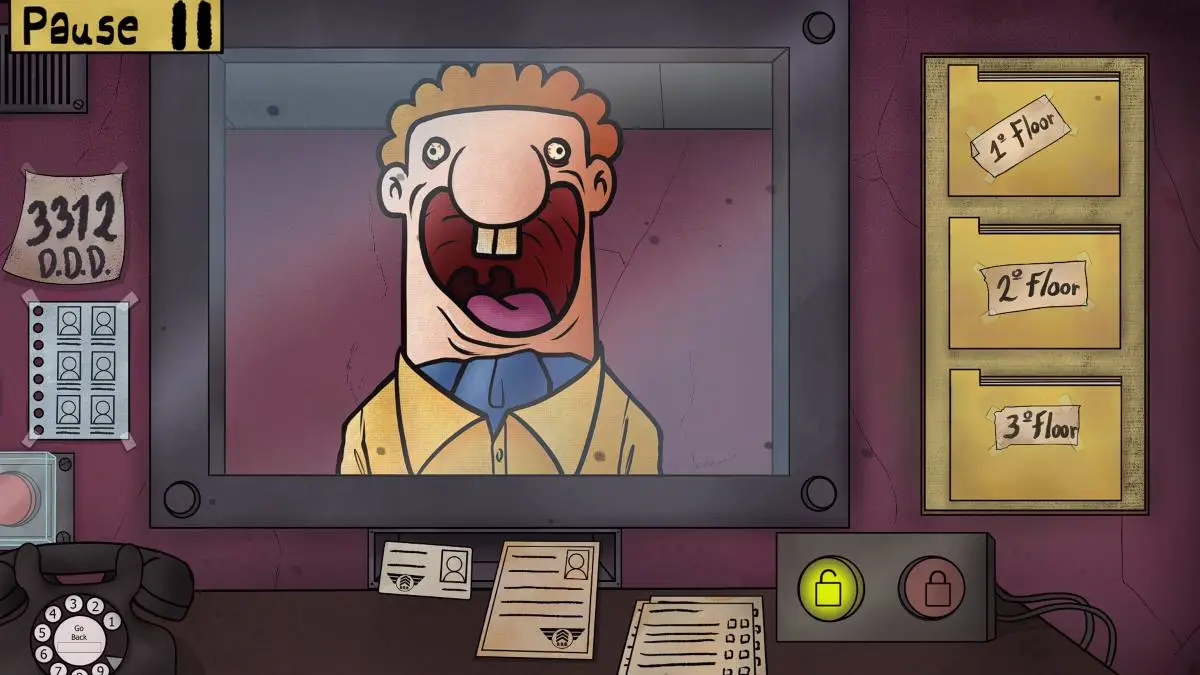Can a seemingly mundane job become a terrifying descent into paranoia? That's Not My Neighbor, a new indie horror game, throws you into the heart of a chilling mystery, forcing you to question everyone you meet.
The independent game is currently taking the platform by storm, with a unique blend of horror and bureaucracy. The game places the player in the role of a doorman in 1955. The primary objective seems simple: Identify and prevent doppelgangers from infiltrating your apartment building. It is a horror working simulation game, and it's one you'll have to approach with caution.
In this mysterious, hidden world, you must face impersonators of neighbors called doppelgangers. You're not just dealing with suspicious characters; you're wading through a world where trust is a dangerous commodity, and your perception is constantly challenged.
| Game Title | That's Not My Neighbor |
| Genre | Horror, Simulation, Indie |
| Setting | 1955, Apartment Building |
| Developer | Ignacio Alvarado (Nacho Sama) |
| Released Date | February 15, 2024 |
| Game Modes | Arcade, Nightmare (and others added later) |
| Key Mechanic | Document Verification, Observation, Deduction |
| Inspired by | Papers, Please |
| Platforms | Itch.io |
| Official Website | Steam Store |
The game, released on February 15, 2024, immerses players in the unsettling role of an apartment security guard. You're in 1955, and a strange occurrence has taken root: doppelgangers are a problem. These shapeshifting creatures mimic real residents, attempting to infiltrate your building. Your job? To spot the flawsthe odd physical details, the mismatched IDsbefore they slip past you. Your actions can affect the outcome, and the choices make the game even more immersive.
This isn't just a game; it's an experience. It's about the creeping dread that builds as you scrutinize every detail, every request, every face that appears at your door. Each check forces you to distinguish between real residents and imposters. Don't let anyone pass if they aren't trustworthy enough, but be careful with your judgment.
The game's premise is simple, yet terrifying. You work for the doppelganger detection department (D.D.D.) as the new doorman for an unknown apartment. You will use the documents and information of the tenants to allow or deny access to applicants seeking entry to your building. The unsettling part? Nothing is as it seems. The game is inspired by the document inspection mechanics of Papers, Please, but infuses a thrilling horror theme.
As you progress, the importance of acute observation, quick thinking, and effective use of tools becomes increasingly apparent. You're not just verifying documents; you're piecing together a puzzle, constantly aware that the pieces might shift at any moment. You will experience a simulation with science fiction elements and a slightly eerie aesthetic. Your ability to succeed depends on your observation and attention to detail.
The gameplay loop revolves around the doorman's tasks. With each interaction, you must assess each person's documents, appearance, and behavior. Any mismatch, any inconsistency, could be a sign of a doppelganger. But be warned: The doppelgangers are cunning. They will try to manipulate you. Trust is a luxury few can afford in this world.
The eerie secrets are hidden behind the apartment door, so be prepared to face them. That's Not My Neighbor excels in building a world where nothing is as it seems, and paranoia is your constant companion. This project was backed by Ignacio Alvarado, an independent developer from Costa Rica, who goes by the pseudonym Nacho Sama.
The game was originally released with a single game mode, Arcade Mode. Nightmare Mode was subsequently added a few months later on May 21, 2024. As of September 28, 2024, there are a total of 4 completed game modes.
The game's atmosphere is key to its success. The 2D graphics, combined with the unsettling sound design, create a constant sense of unease. Every creak, every shadow, every hesitant knock at the door, amplifies the tension. The game invites you to walk through the door of a building as you prepare to become the new security guard of an apartment block where you must make sure that creatures called doppelgangers, who look a lot like humans, don't cause any trouble.
The game is reminiscent of titles such as Papers, Please and Not Tonight, productions on the border of logic and adventure games. You will assume the role of the porter of a building. The problem is that, for unknown reasons, the world is full of terrifying doppelgangers (creatures that try to impersonate people to end up with them when nobody sees them) and it will depend on you that none of them manages to enter the building.
In Thats Not My Neighbor, players must traverse the eerie labyrinth. The year is 1955, and for unknown reasons, doppelgangers have suddenly surfaced as a major issue. Thankfully, the doppelganger detection department (d.d.d.) has taken action on the matter. They have hired you as their new doorman for an unknown apartment, where your job is to verify all residents that request entry into the building.
The game's success lies in its ability to create a sense of dread. It's not just about jump scares; it's about the slow burn of suspicion, the constant feeling that something isn't right, and the creeping awareness that you might be the only one who can stop it. The game challenges your sense of observation, your ability to think critically, and your willingness to trust your instincts. It demands your attention and rewards your vigilance.
The game invites you to a world where every face is a potential threat, and every door hides a secret. In That's Not My Neighbor, you're not just playing a game; you're living a nightmare.


